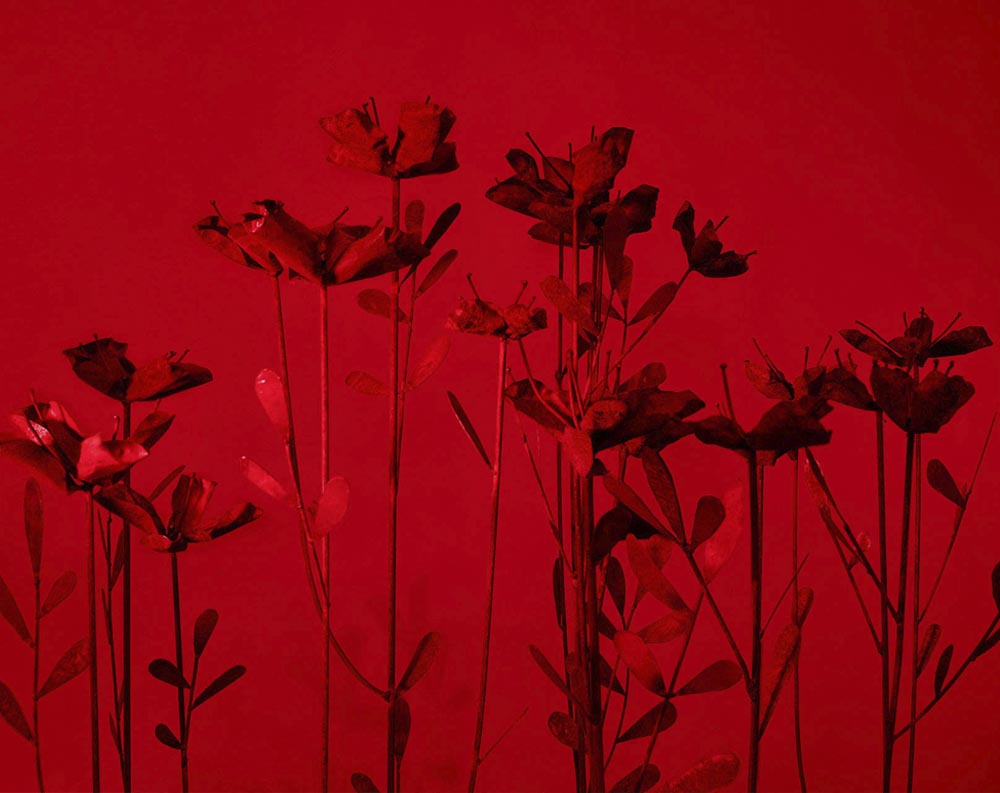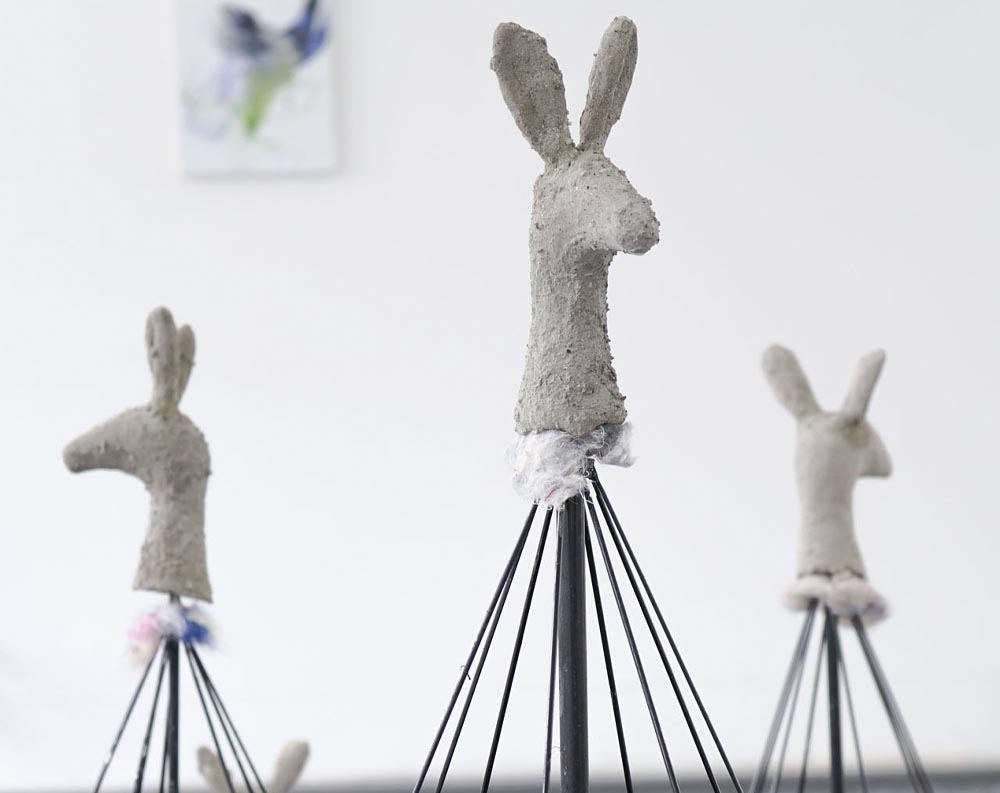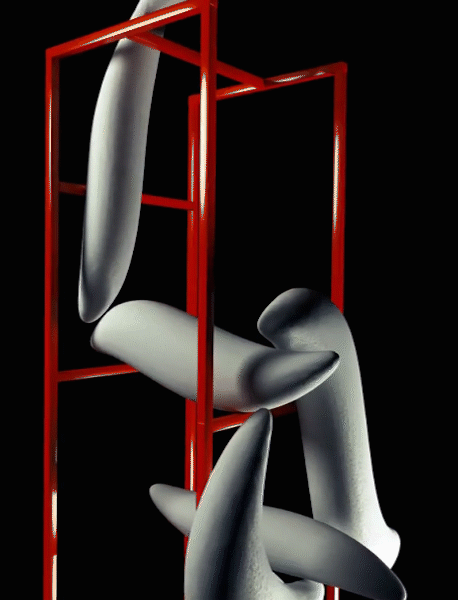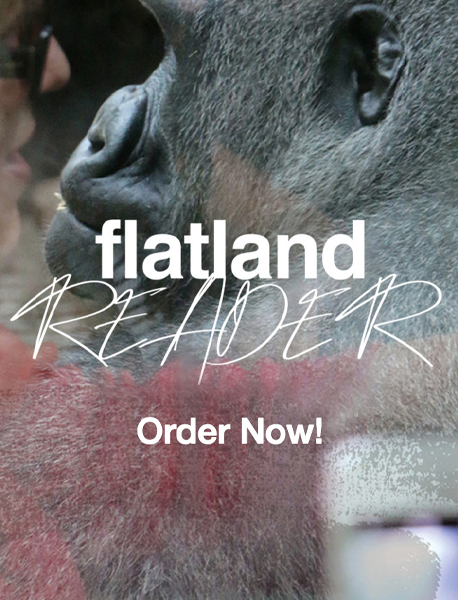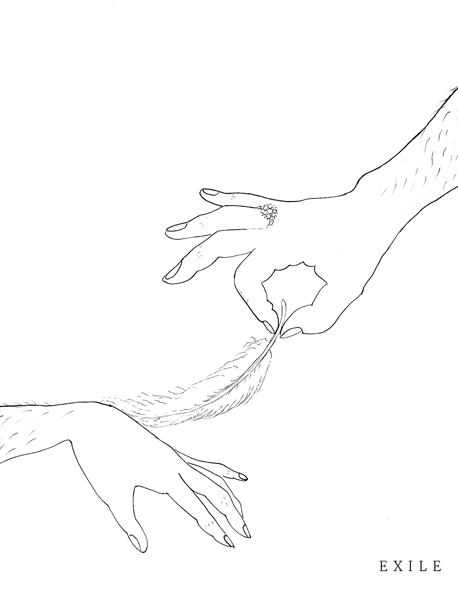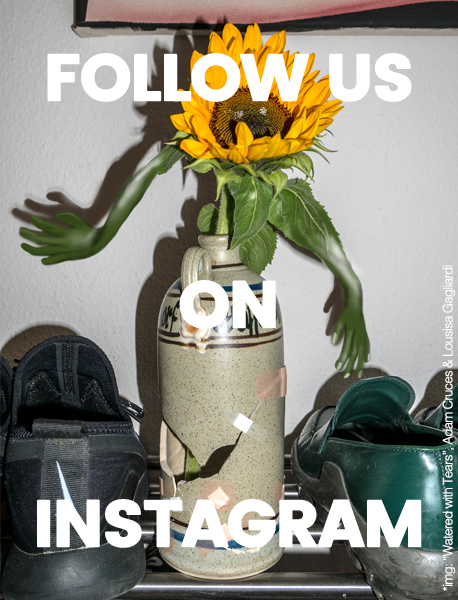OFLUXO
Augurhythms
Earth Aengel, Suzanne Anker, Phong Bui, Geoff Chadsey, Justin Cloud, Coleman Collins, Theresa Daddezzio, Angela Dufresne, Lauren Fejarang, Sasha Fishman, Kara Gut, Ronald Hall, Anthony Hawley, Fox Hysen, Mala Iqbal, Myeongsoo Kim, Mo Kong, Michael Jones McKean, Lubos Plny, Nevena Prijic, Erik Probst, Timur Si-Qin, Karinne Smith, Jane South, Peat Szilagyi, Didier William, and Andrew Woolbright
Curated by Fragile Institute
At Hesse Flatow, New York, US
July 14 — August 26, 2022
HESSE FLATOW is pleased to present Augurhythms, a group exhibition organized by the The Fragile Institute, for the purpose of studying forms of material and visual divinations through rhythms of the body, nature, and nascent explorations of ritual practices. The exhibition includes the work of Earth Aengel, Suzanne Anker, Phong Bui, Geoff Chadsey, Justin Cloud, Coleman Collins, Theresa Daddezzio, Angela Dufresne, Lauren Fejarang, Sasha Fishman, Kara Gut, Ronald Hall, Anthony Hawley, Fox Hysen, Mala Iqbal, Myongsoo Kim, Mo Kong, Michael Jones McKean, Lubos Plny, Nevena Prijic, Erik Probst, Timur Si-Qin, Karinne Smith, Jane South, Peat Szilagyi, Didier William, and Andrew Woolbright with performances by Kara Gut and Peat Szilagyi. The artists of Augurhythms seek to expand the interconnectedness of all living things, what was classically referred to as the anima mundi, to include technology, information, and the metaphysical realm within its definition, finding moments of transmission between the material and the informational.
Katherine Hayles described the posthuman subject as “an amalgam, a collection of heterogeneous components, a material-informational entity.” The ancient haruspex prefigured this material-informational entity, able to see the future in the entrails of an animal; while the augur could see it in the flightpaths of birds. Hieronymous Bosch’s The Forest That Hears and the Field That Sees (c. 1500) was another material-informational palimpsest, a visual channel to the ancient knowing of the world, and the animistic technologies of the forest to understand, determine, and engineer itself. Where David Joselit introduced the idea that art, specifically painting, is a form of speculating on time, the artists of Augurhythms disengage it from its language and proximity to the world of finance to connect it to a more metaphysical context of material and bodily divination–something that is more than trend forecasting but suspicious of the adoption of overt languages of spiritualism or paganism.
The delineation between technology and the material world has limited our ability to engage with the internet as an emergent organism. While Heidegger linked the origins of art and technology through the classical word techne, the techne of technology is often considered oppositional, an othered world set apart from and contrasting to the conditions of the natural world. Our current understanding of the word technology is relatively recent- the result of a taxonomic split from the pre-Enlightenment usage of the word tool to a word that now carries with it a relationship to awe and utopic magik. In reality, our nascent technology is connected to a lineage of ancient cultural and spiritual technologies; aberrations first explored by shamans and later by the alchemists and others, who used the words of creating, conjuring, and seeking interchangeably. Rimbaud sought to revive this role for artists when he called for the poet to be a voyant, a seer. The artist on these terms, as a scryer, as an augurer, as alchemist and engineer-of-self, disrupts the Umwelt; enacting forms of virtual and material becoming together. This auguring, accessed through the sensing and manipulation of temporal rhythms, marks a return to the earth, one of both living things and transmitted information that is connected through the long human tradition of pattern finding. The artist, the pataphysician, can begin searching in Bosch’s forest without hypotheses, begin without knowing, prioritizing the development of objects to react to, to experience; developing shared noetic, unconscious spaces through codes of Jungian transmission, active imagination, and other forms of becoming.
The three galleries of Hesse Flatow each reflect a refamiliarized rhythm, or cycle, of augurhythmic study. The first gallery re envisions the faerie ring as a direct metonym for this return to earth. Here in the gallery, the ring of ritual objects and paintings reflect a range of processes of reclamation and new patterns of overgrowth. There is Justin Cloud’s Apple Jack (2022), a welded steel rib cage growing into a tree with 3D printed apples, a cypher and glitch that extends across channels of nature, technology, and the human figure; Jane South’s reclaimed materials salvaged from the renovation and excavation of her apartment building in Brooklyn; Lubos Plny’s drawings of neural networks, an attempt by Plny to understand the source of his physical and neurological trauma; and two of Phong Bui’s meditation paintings, made each day while structuring the community of The Brooklyn Rail.
The second room of the gallery memorializes nature and the landscape, presenting a space where mediation acts as a condition of mourning. Suzanne Anker’s Biota, made of silver-leaf rapid prototype figurines and porcelain mimetically function as fossils of coral; Earth Aengel’s Dolphin Gurlz Eternal (2021) hovers in the space of autobody engineering and nature reliquary; and Myeongsoo Kim’s collage photography records the landscape only to fracture and re-process it.
The last room of the gallery deals with the material-informational body, and its ability to engineer itself to channel rhythms and knowing through time. Coleman Collins studies his own DNA and genetic material, and then creates sculptural reliefs as a way of understanding the past while visualizing the future; Ronald Hall invents anachronistic scenes, or parallel alternate realities where plantation houses are the ominous backdrops to black psychic resistance; and Anthony Hawley forms connections between totems of the islands of Malta and raster drawings of early computers.
There will be two performances during the run of the exhibition. Kara Gut will create a crowdsourced machinima utilizing a fantasy video game; and Peat Szilagyi will lead a prayer for the internet as a living entity.
— HESSE FLATOW
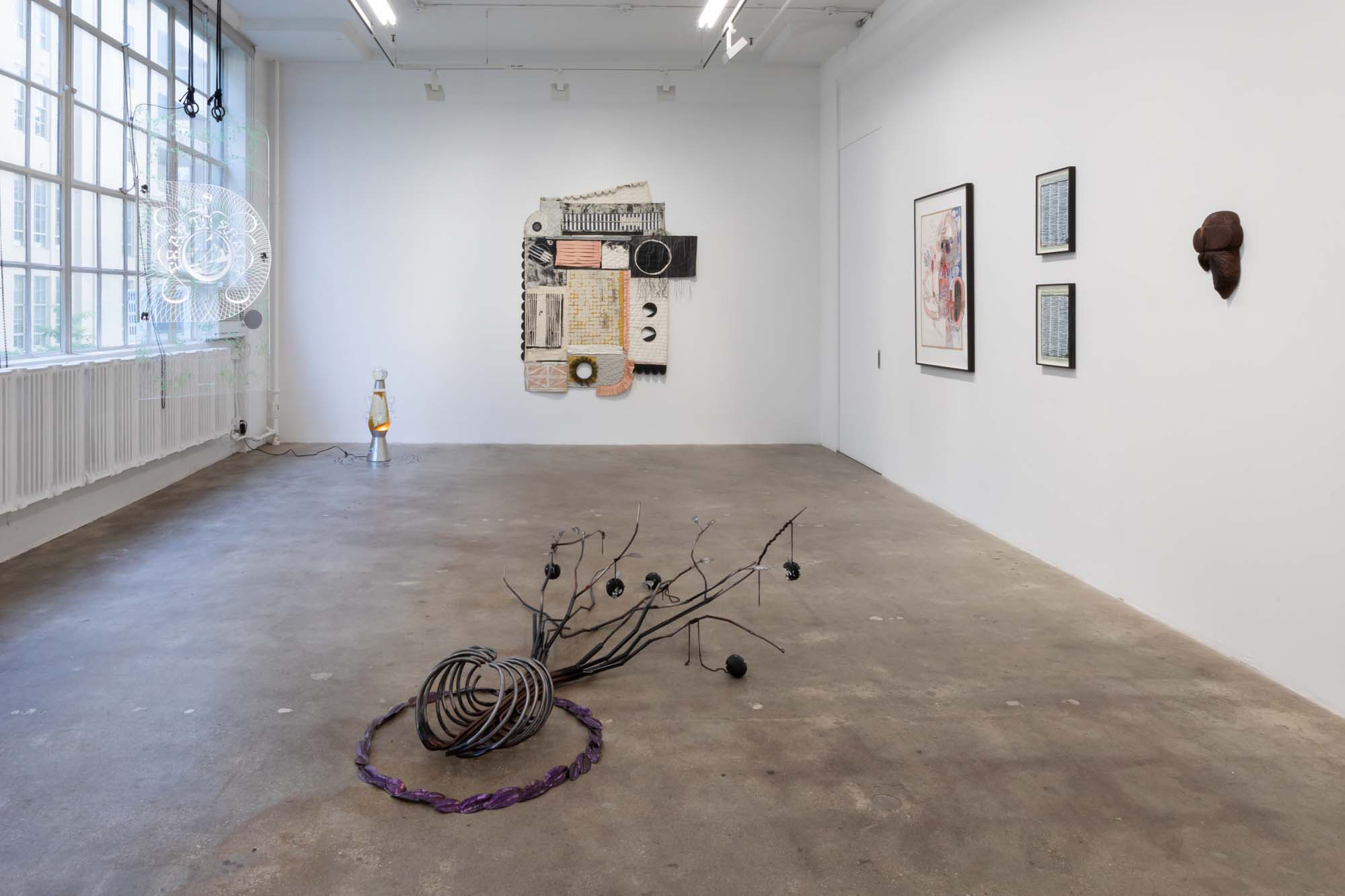
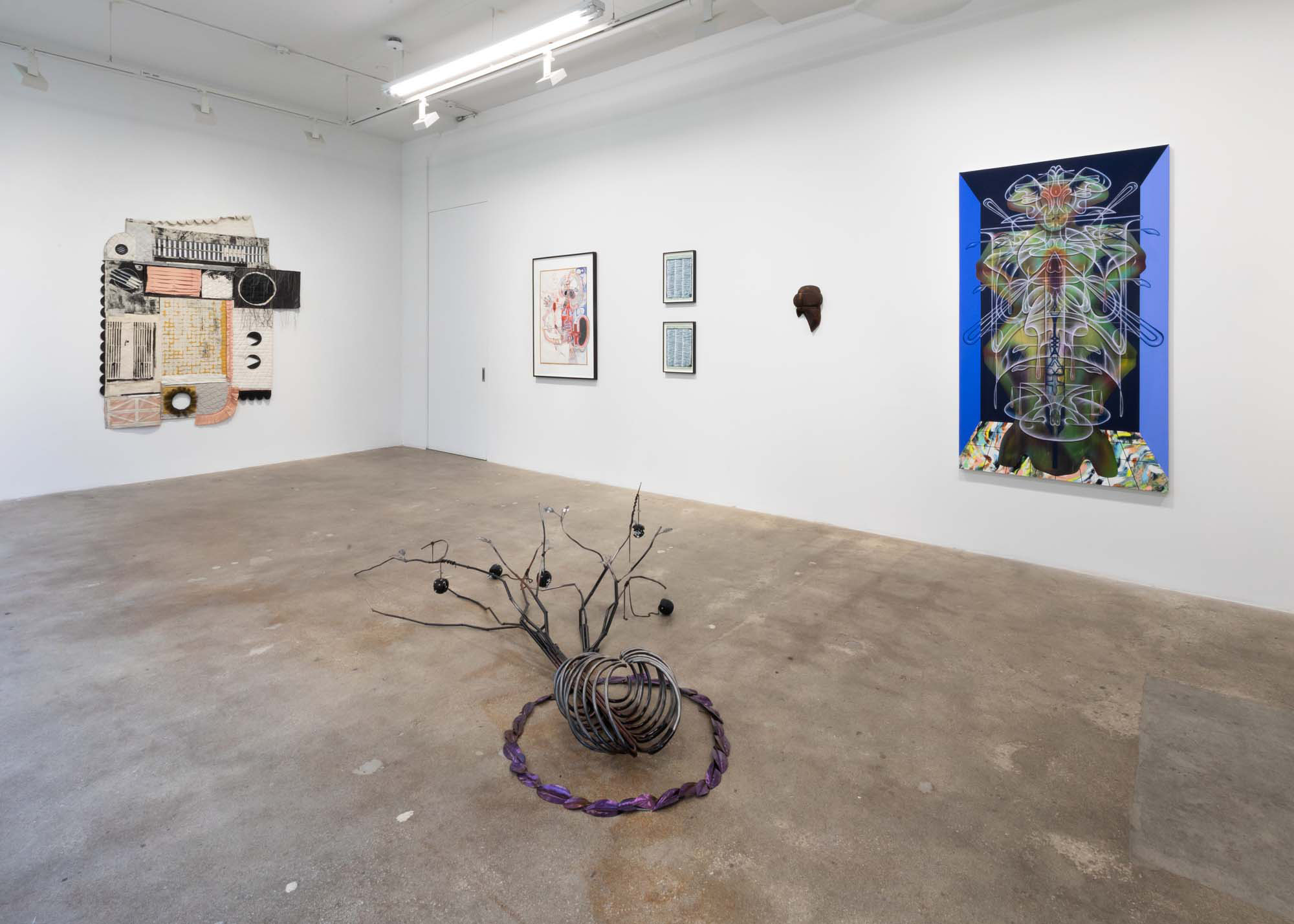
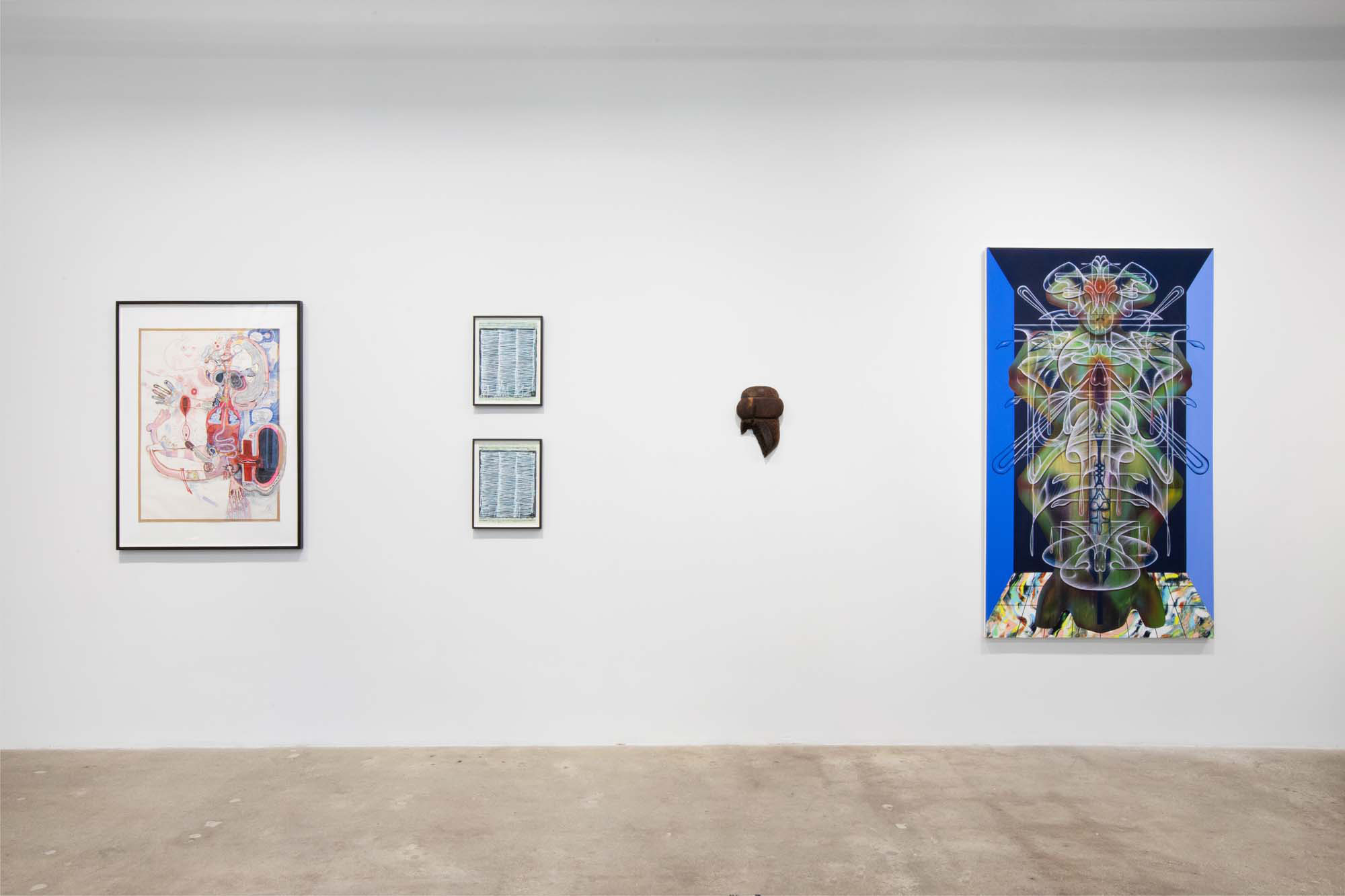
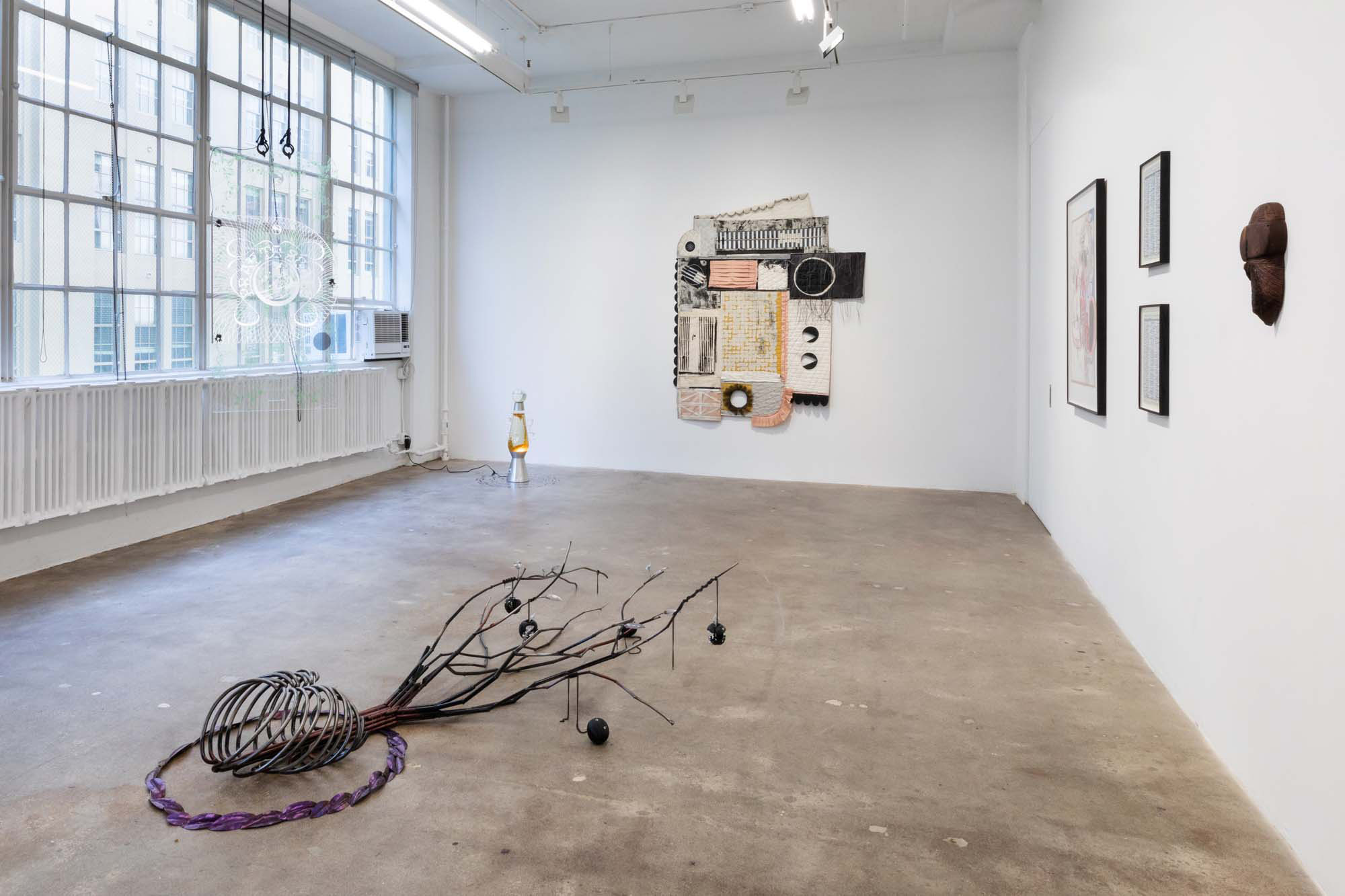
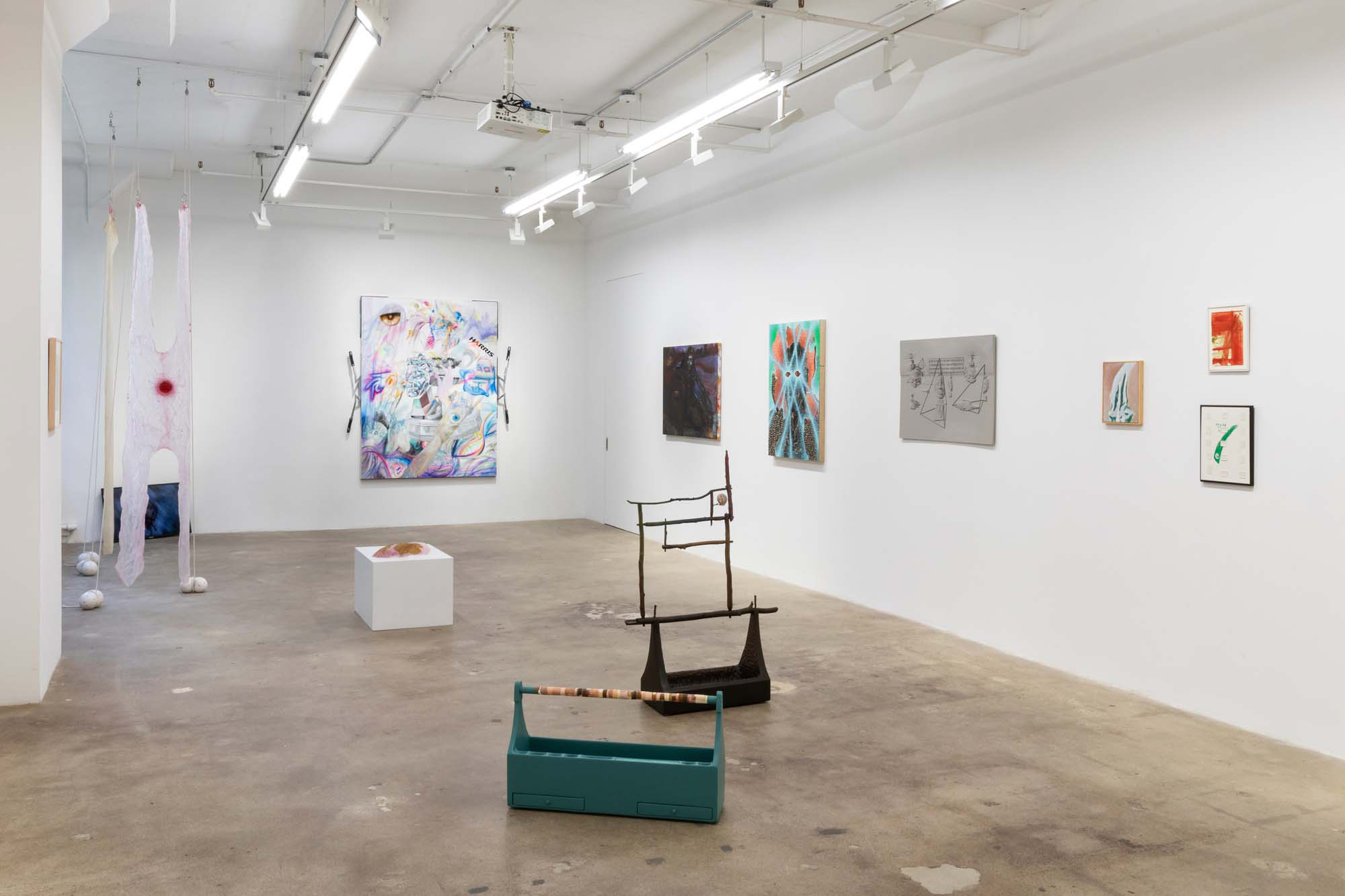
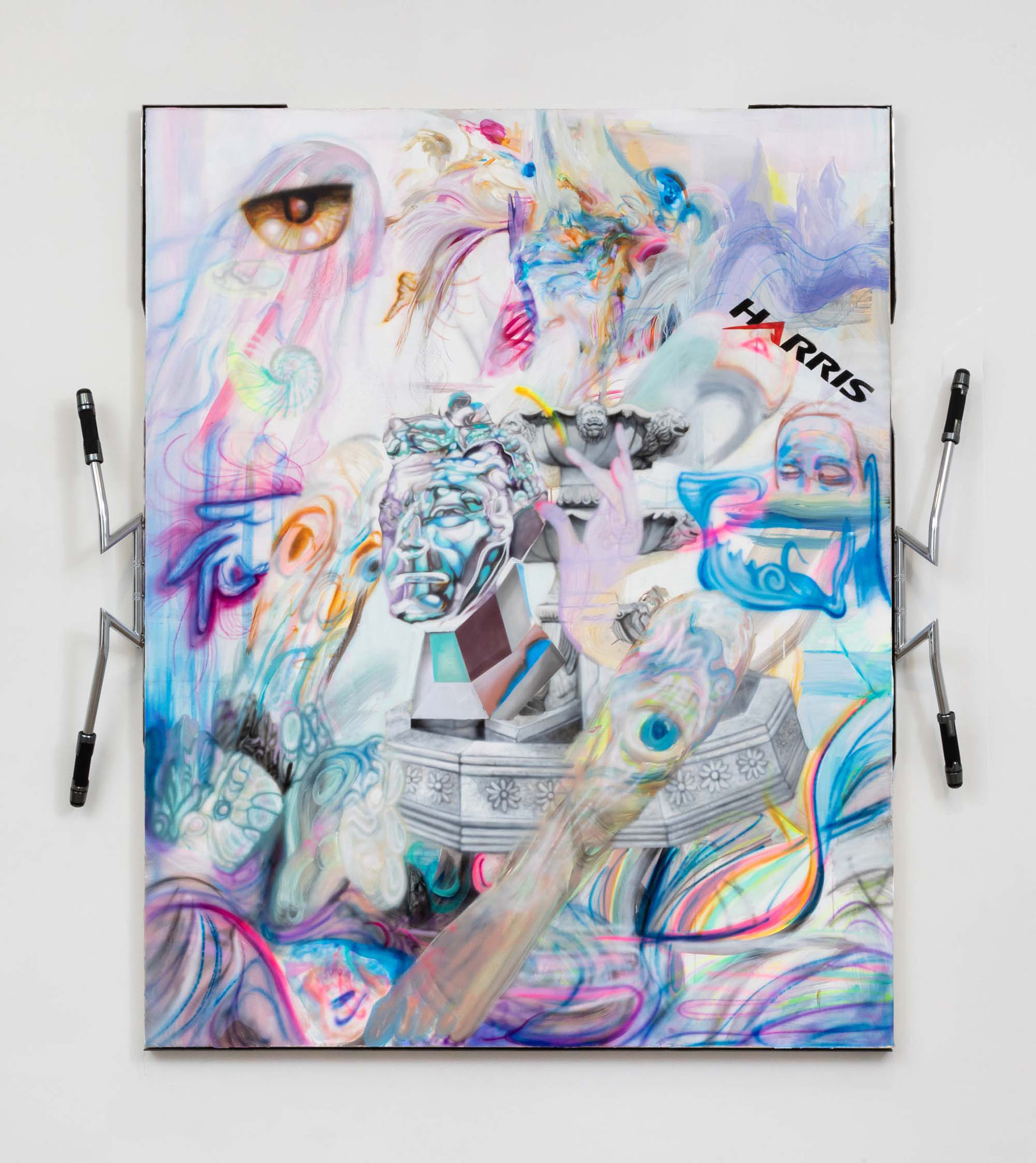
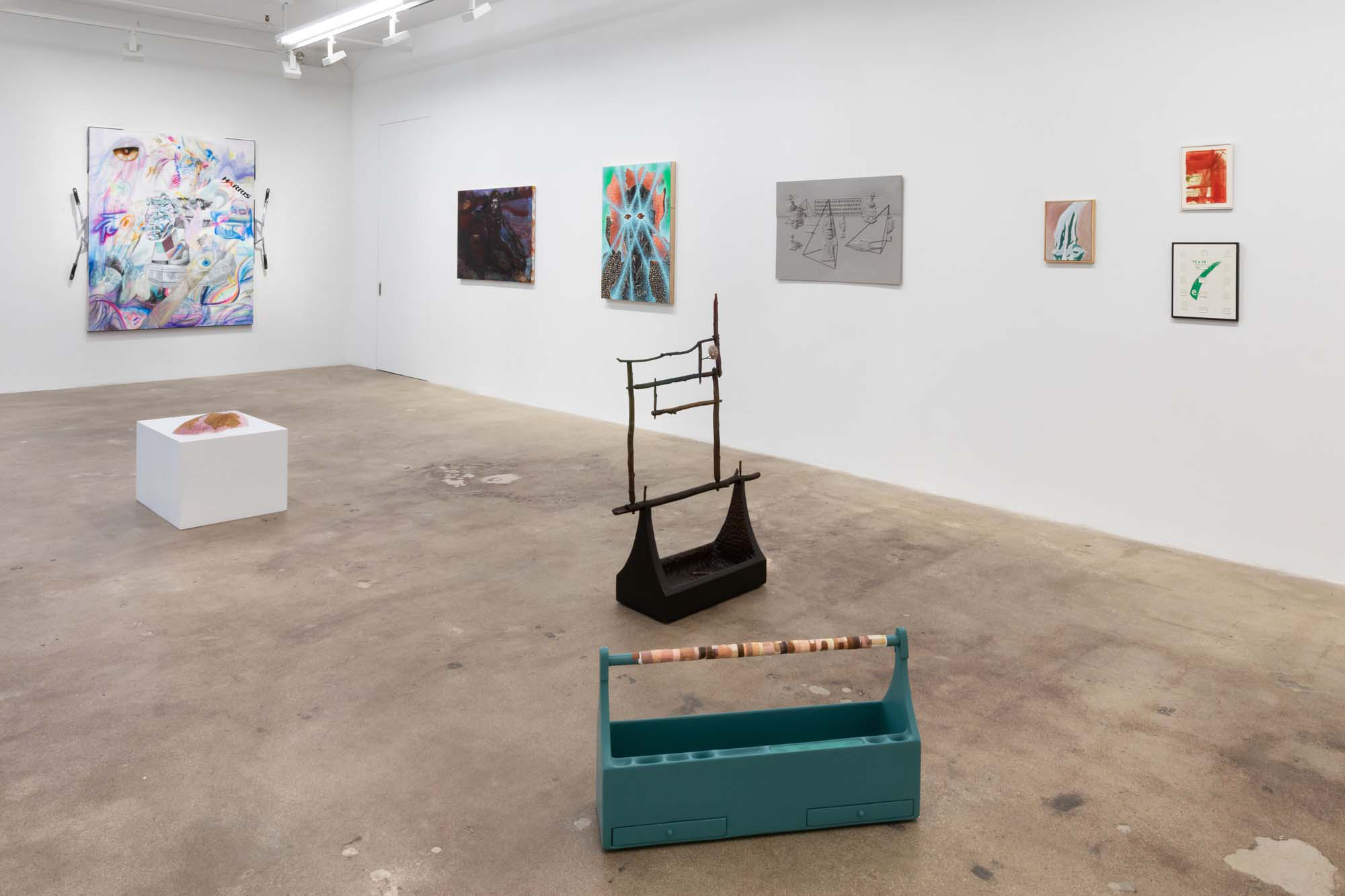
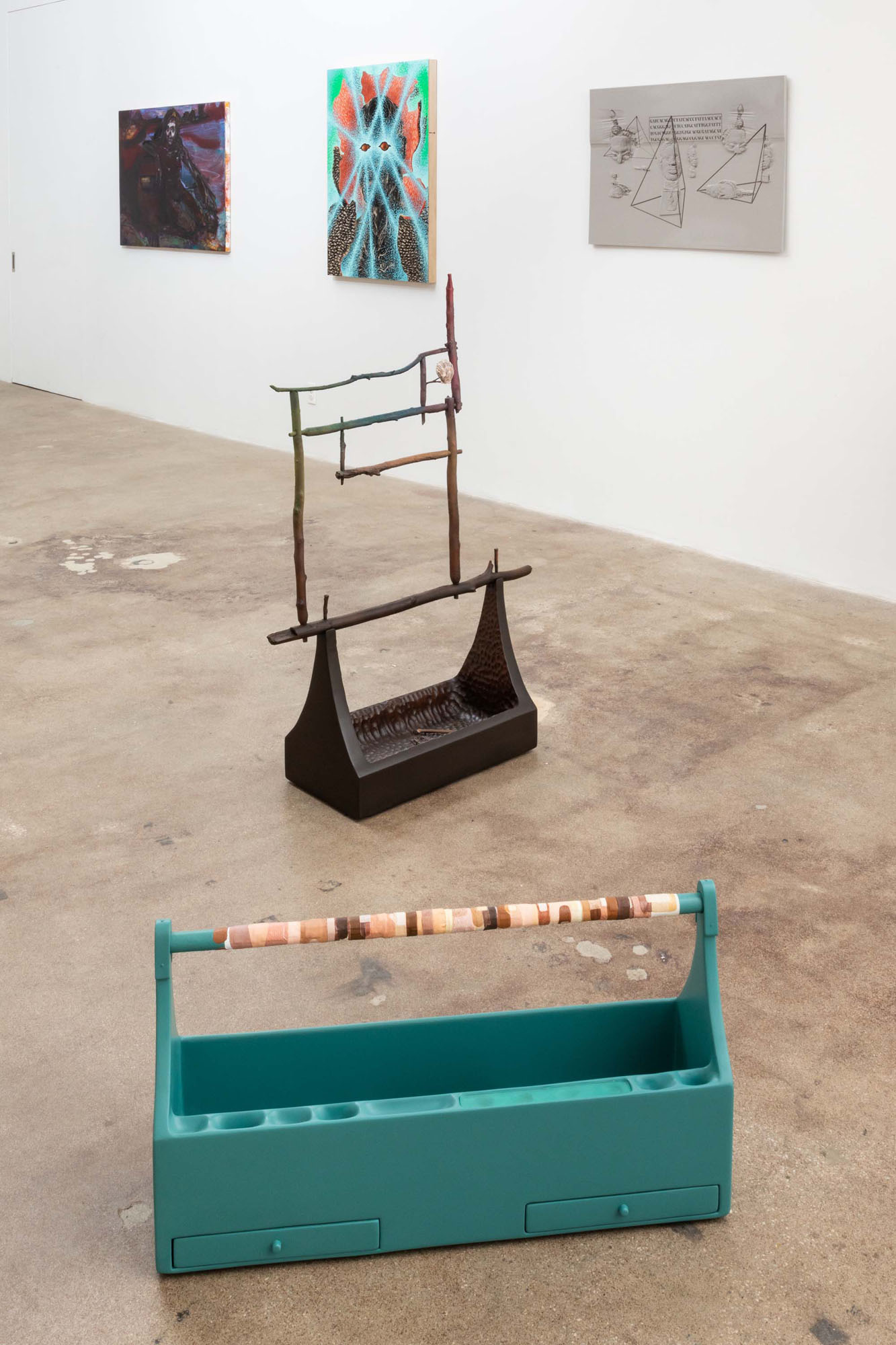
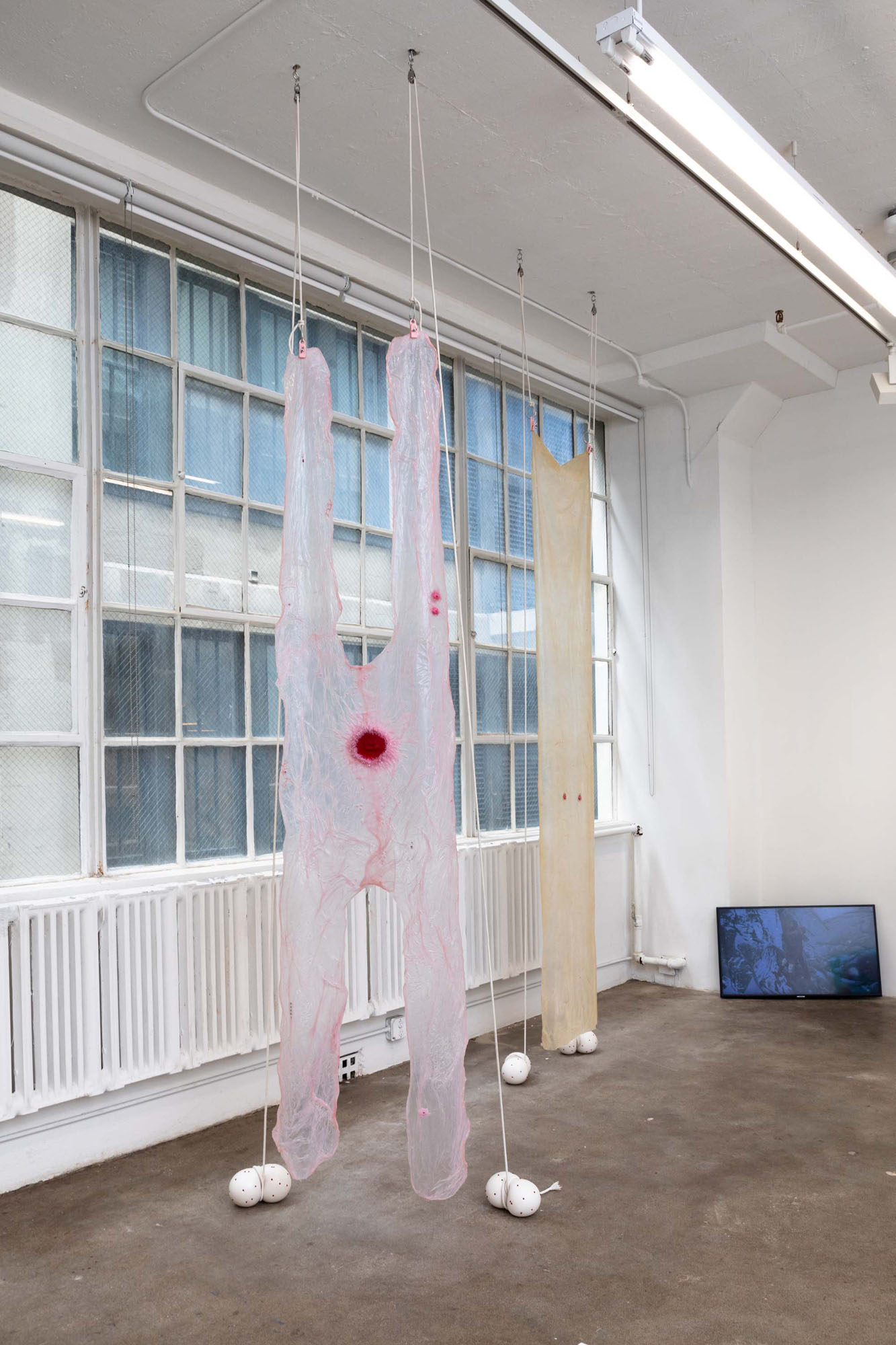
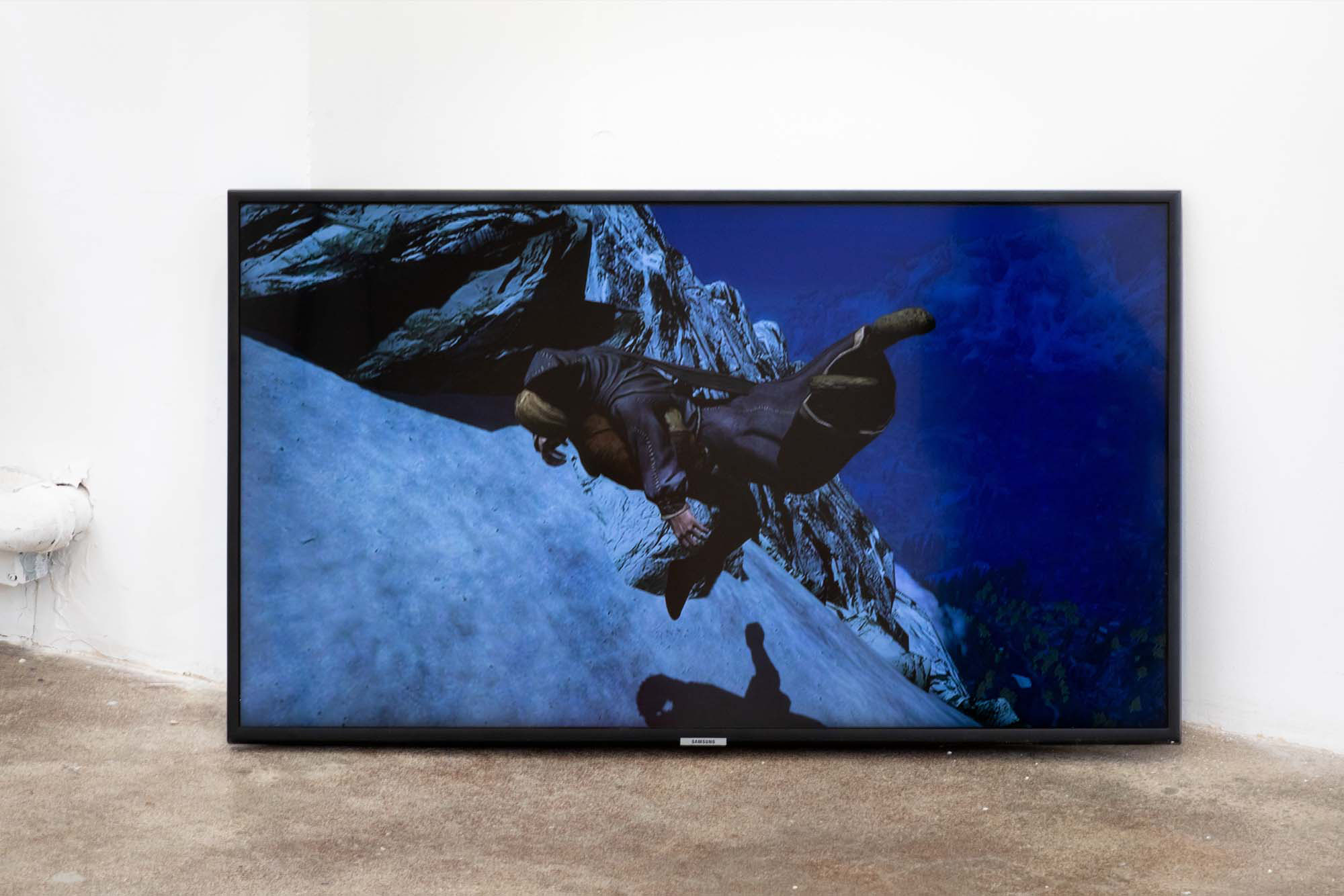
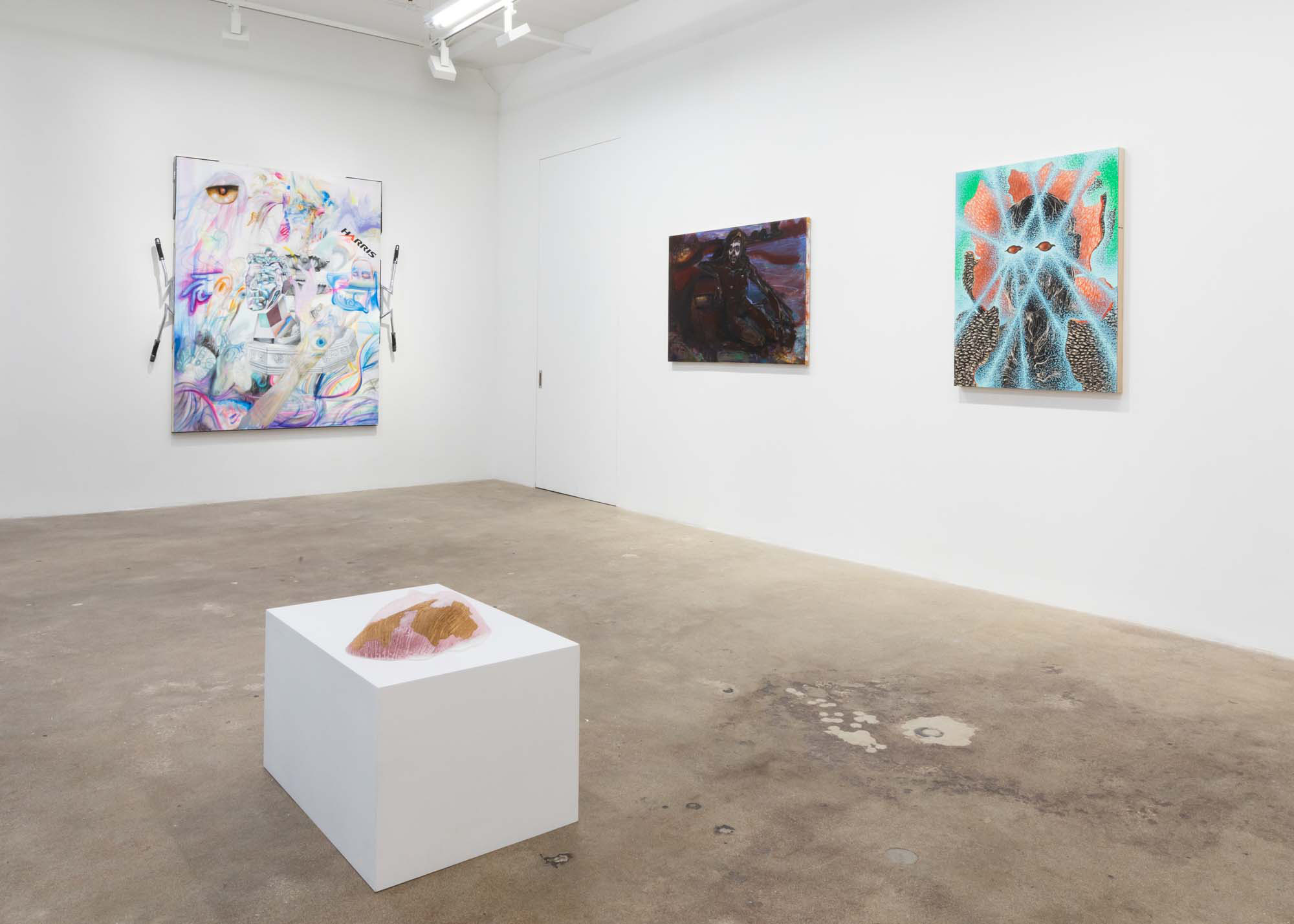
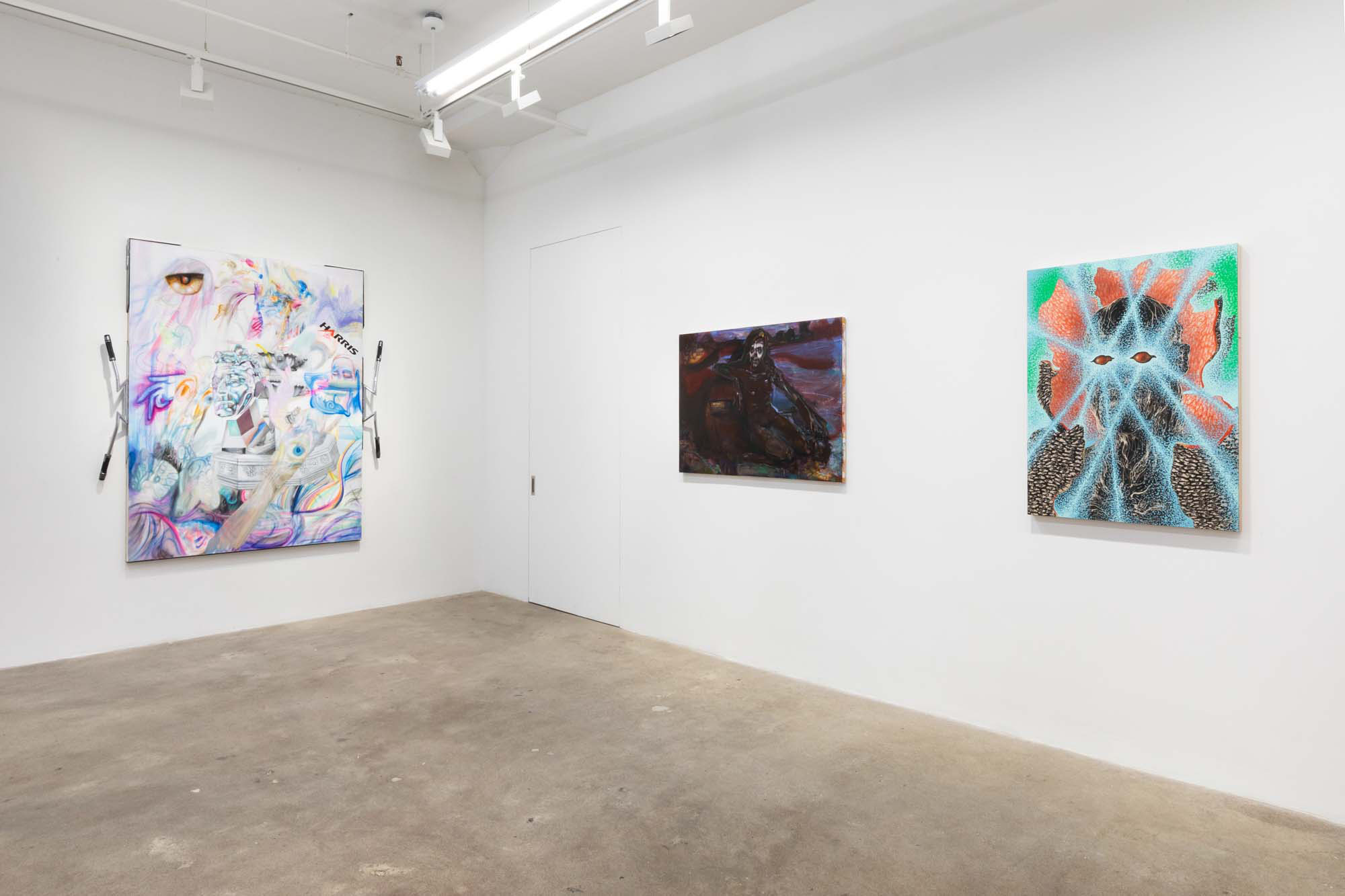
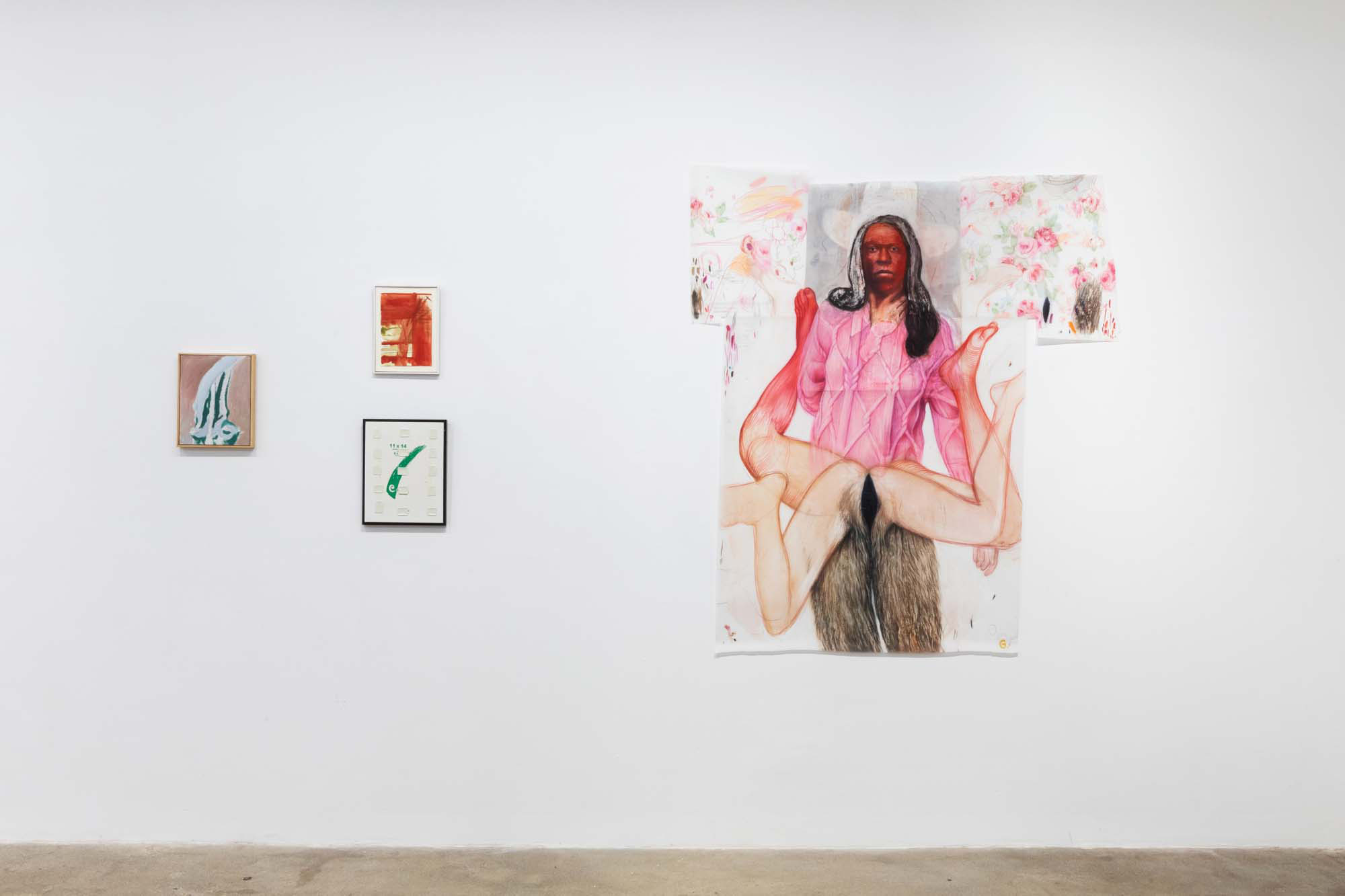
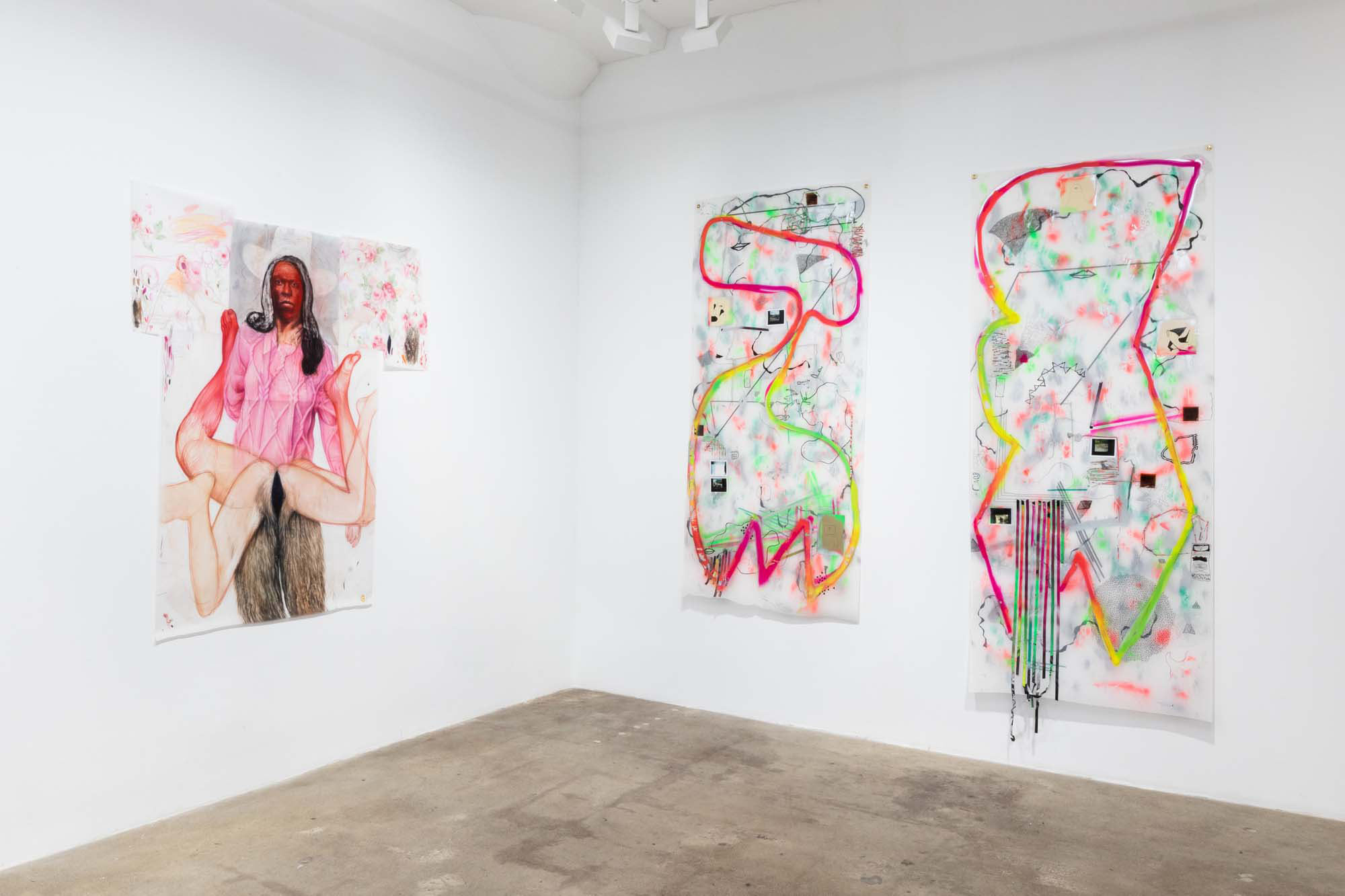
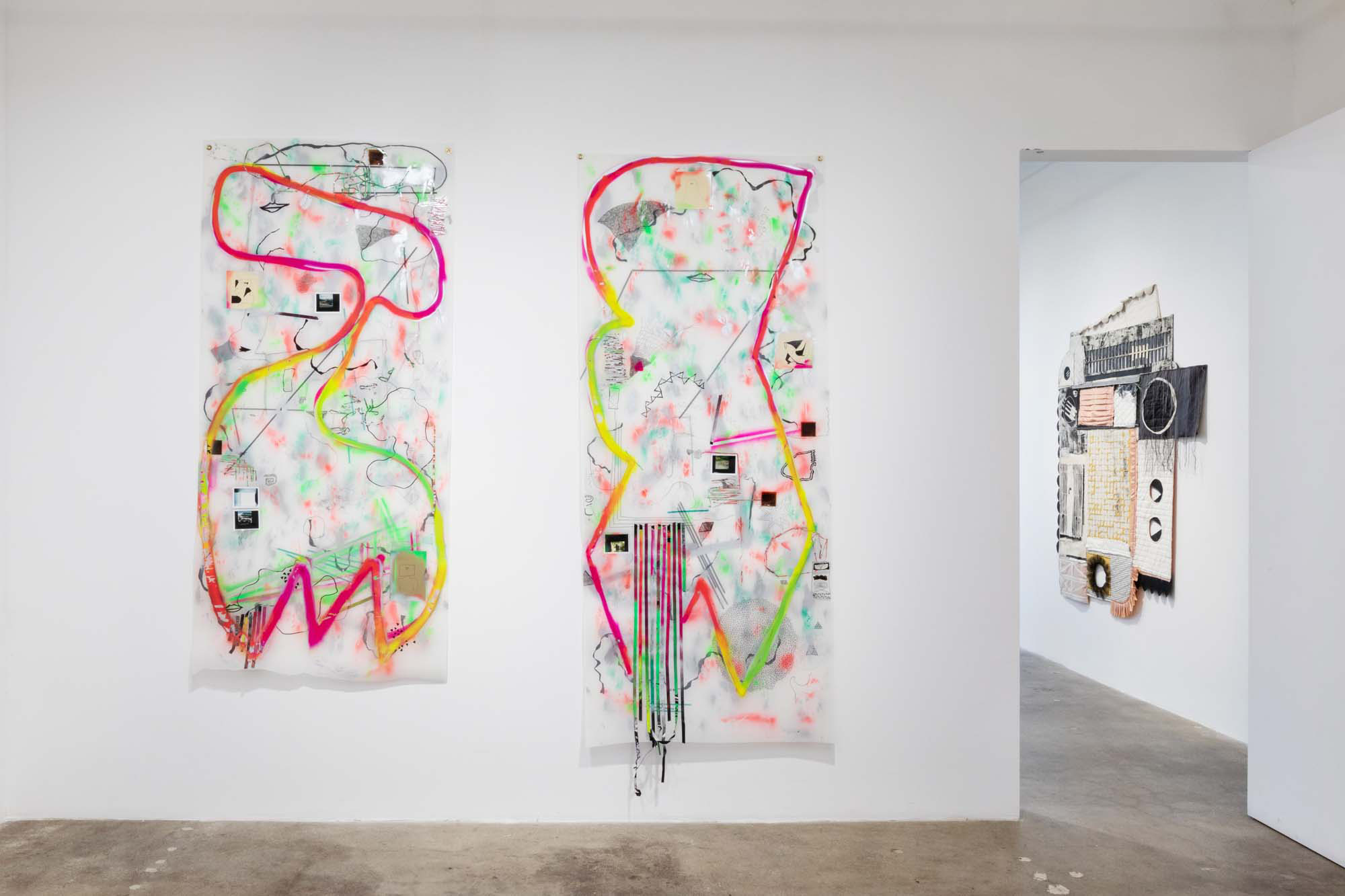
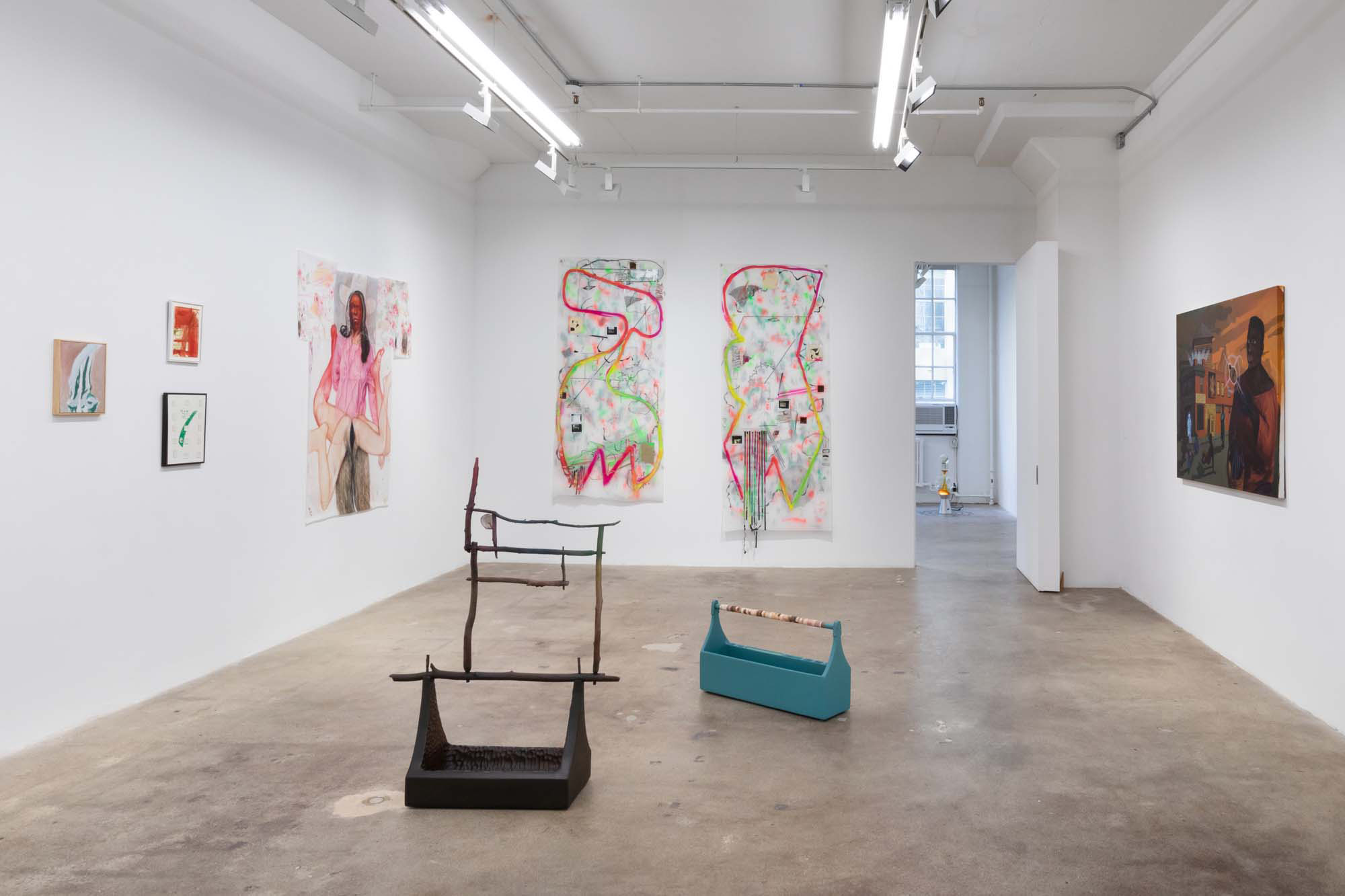
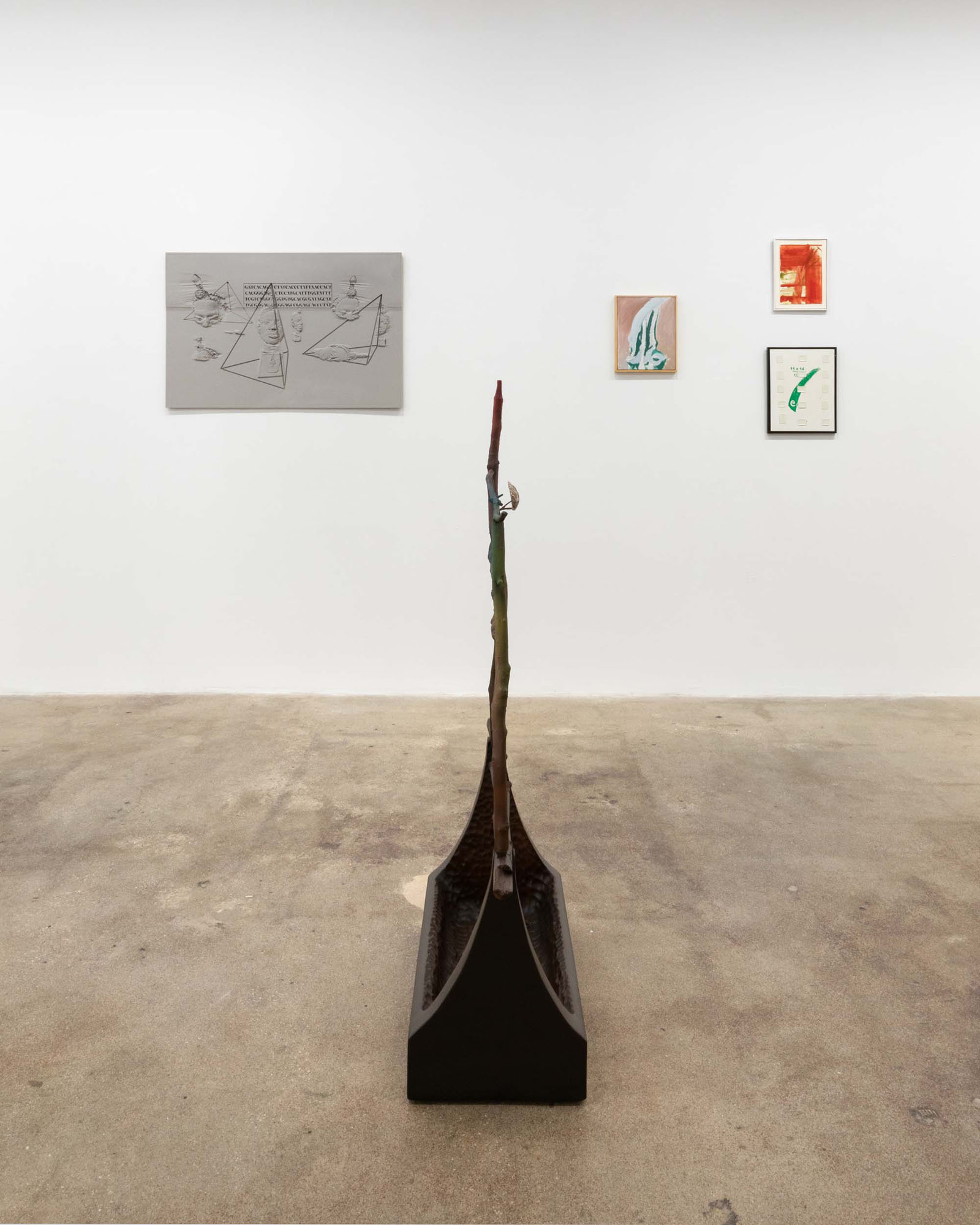
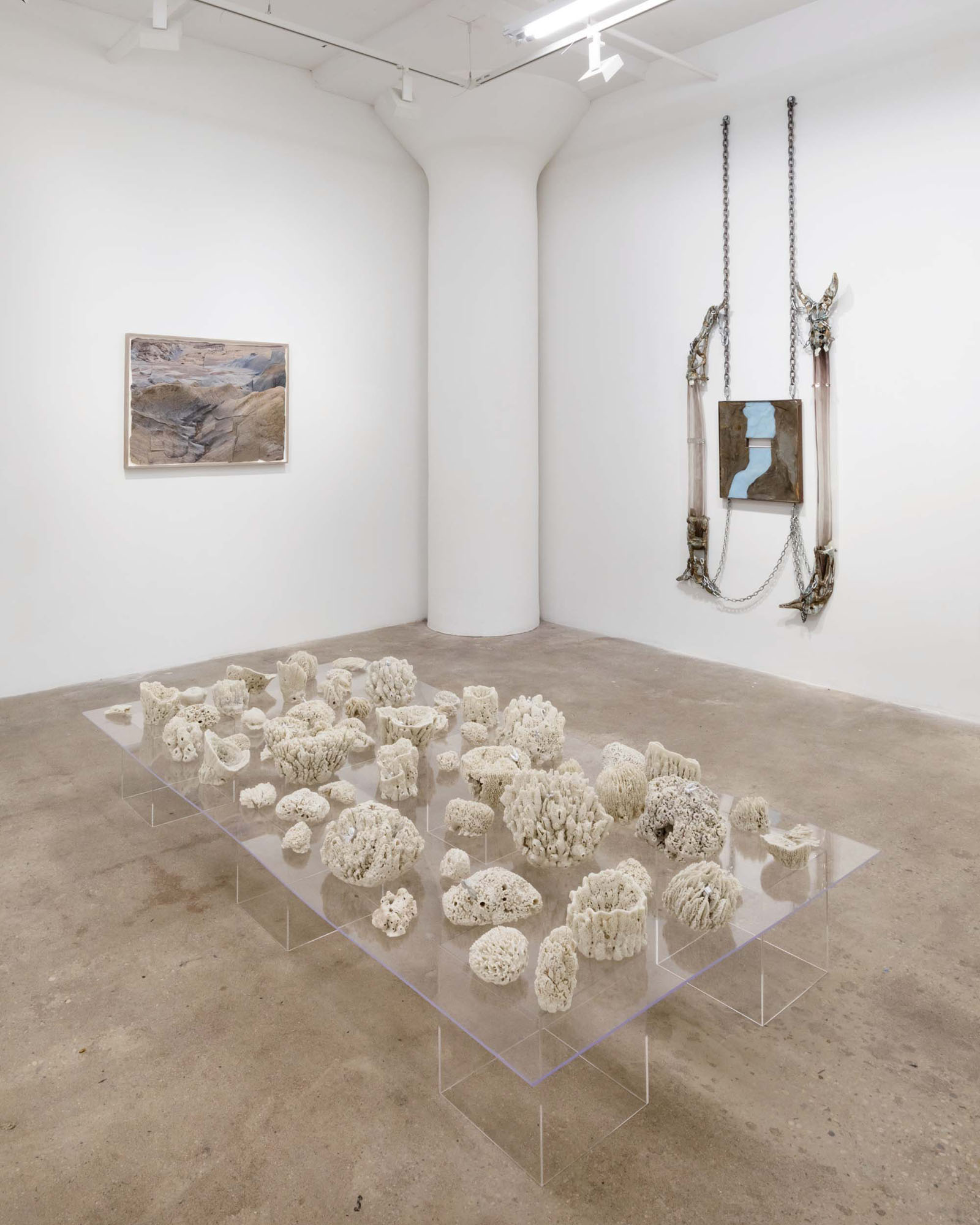
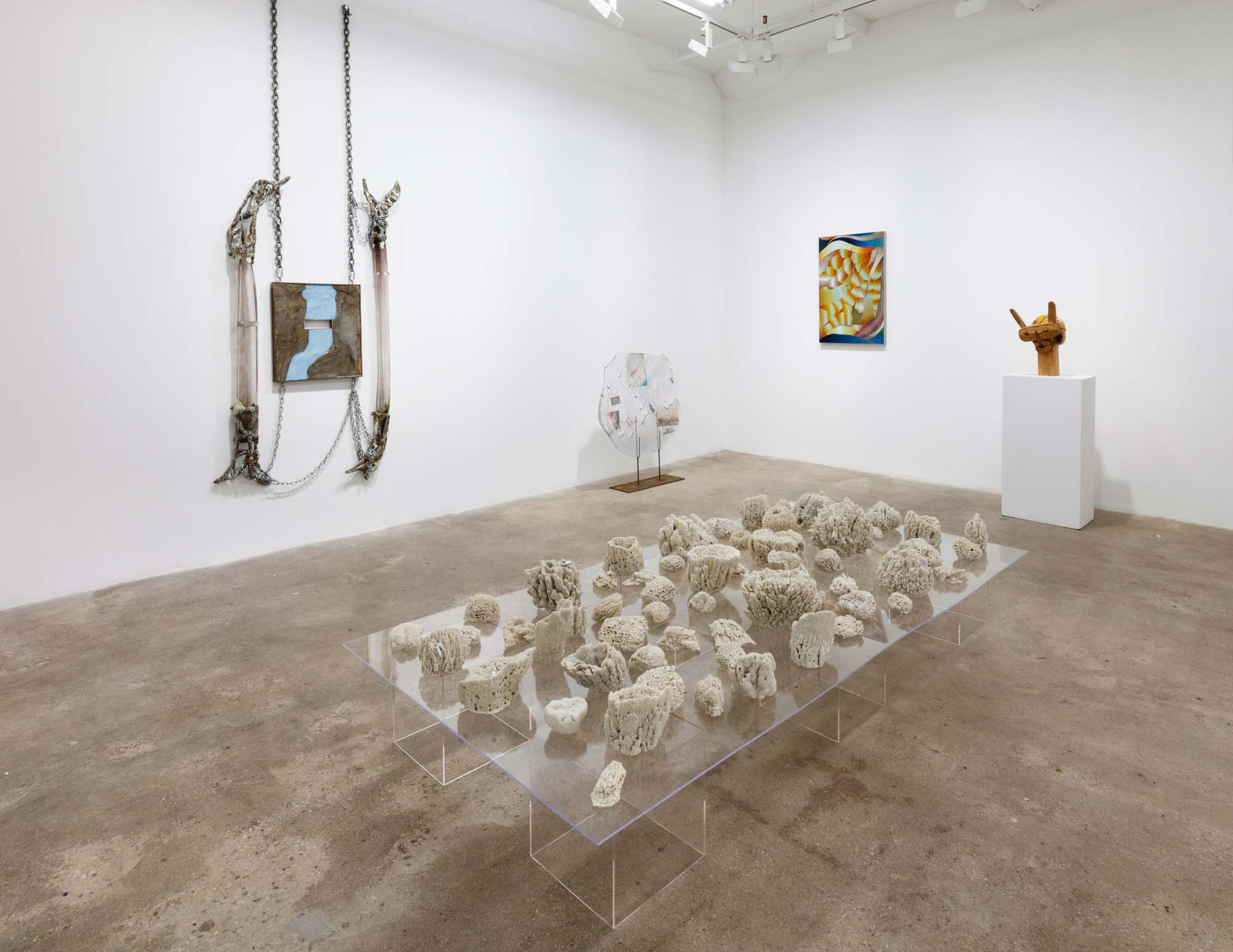
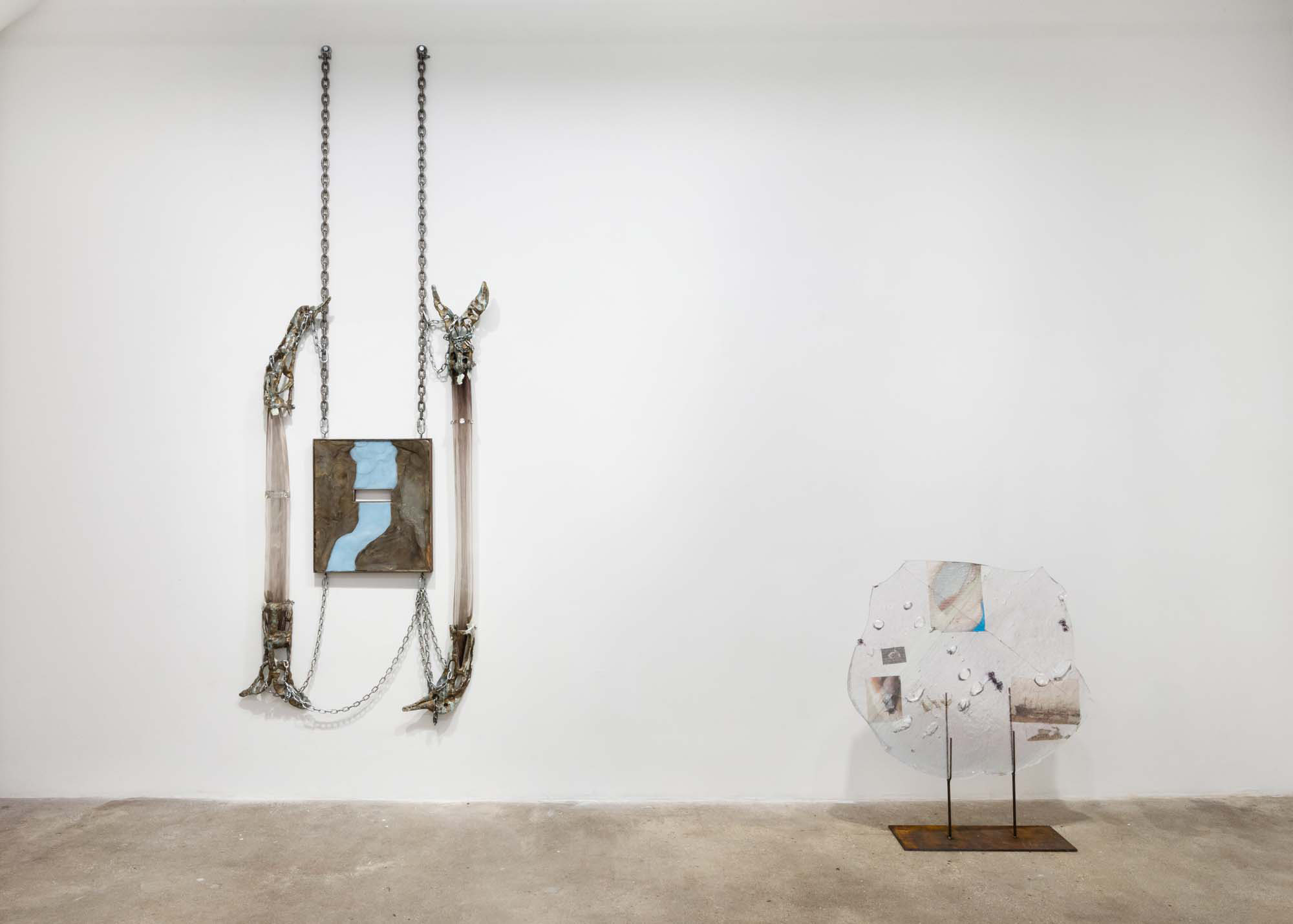
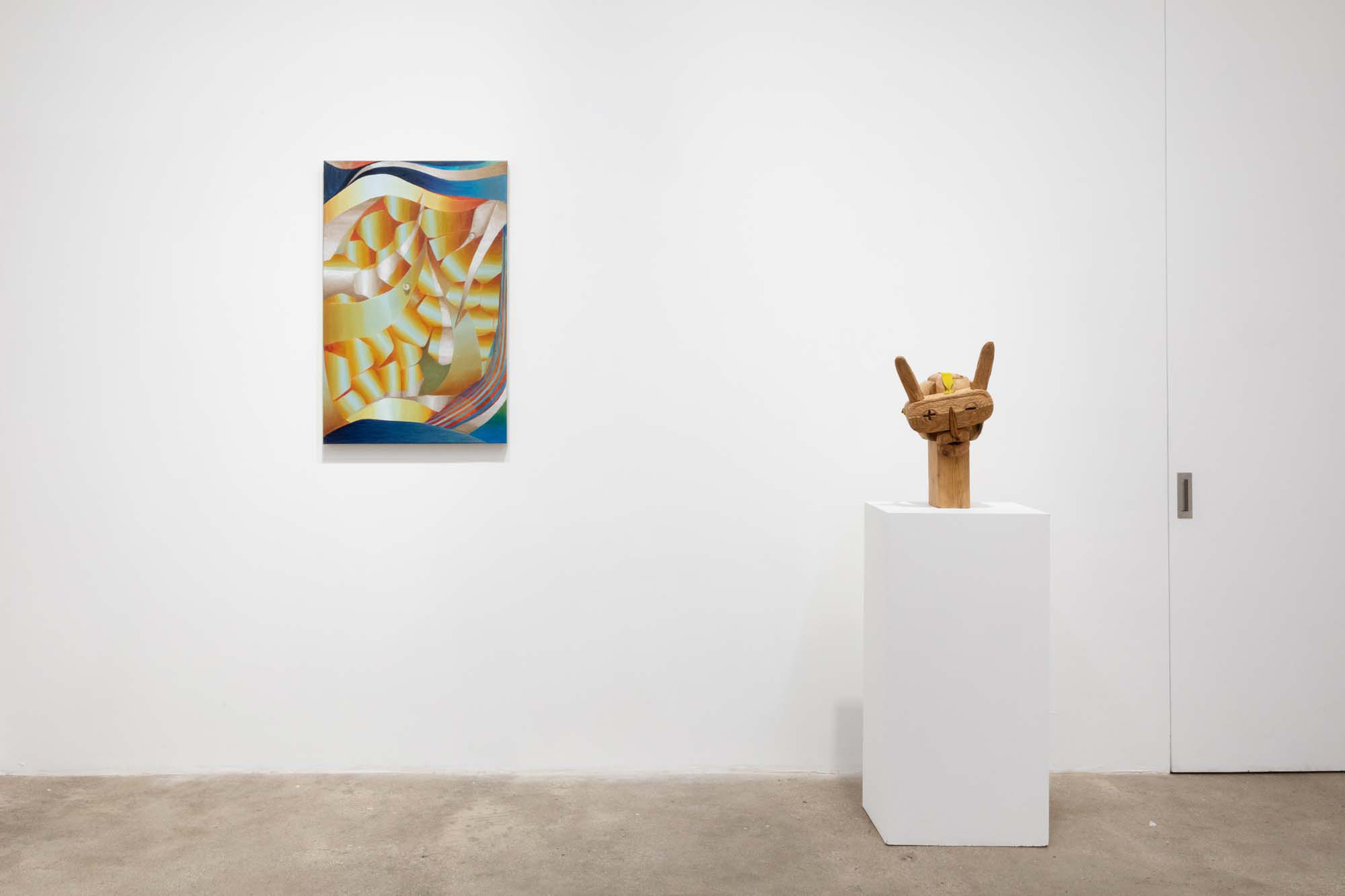
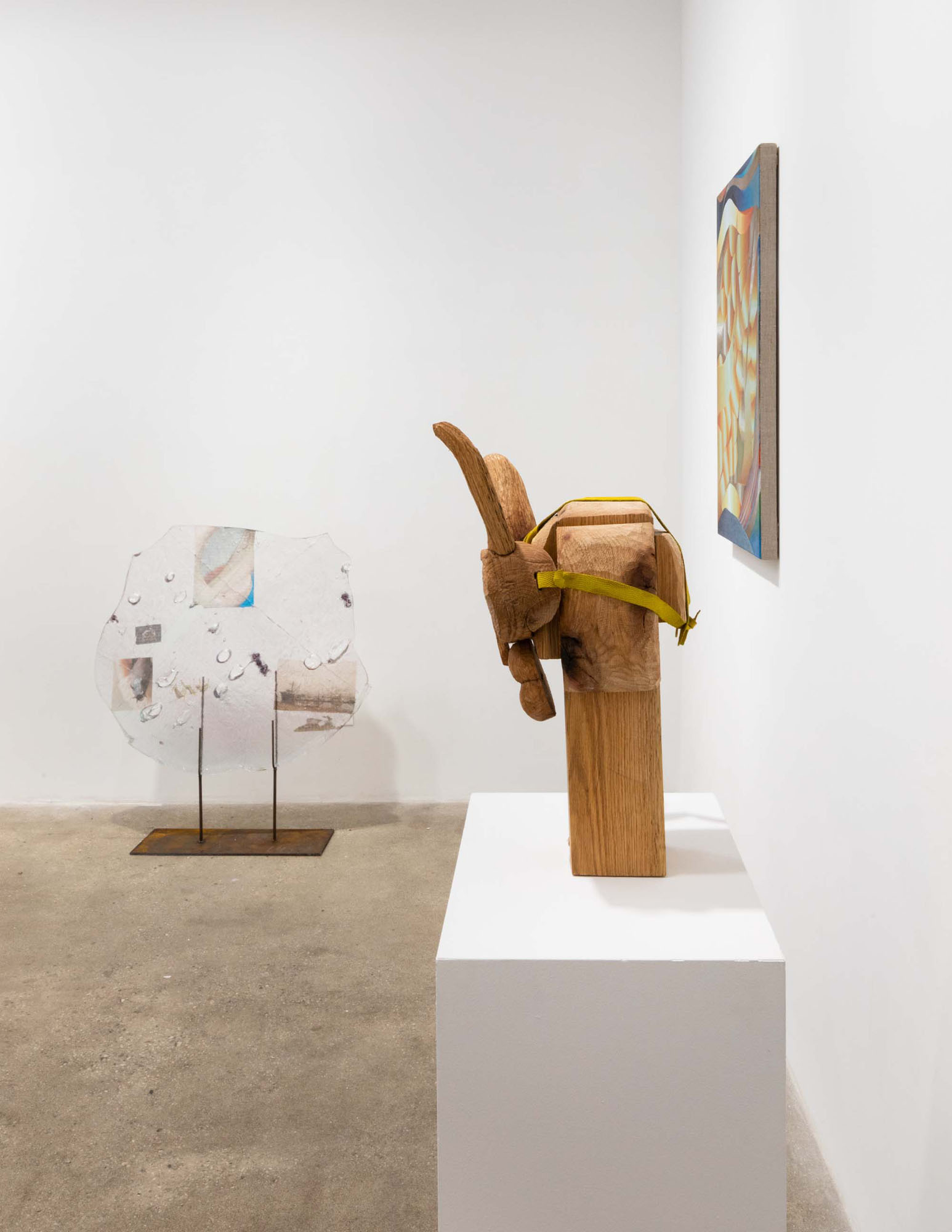
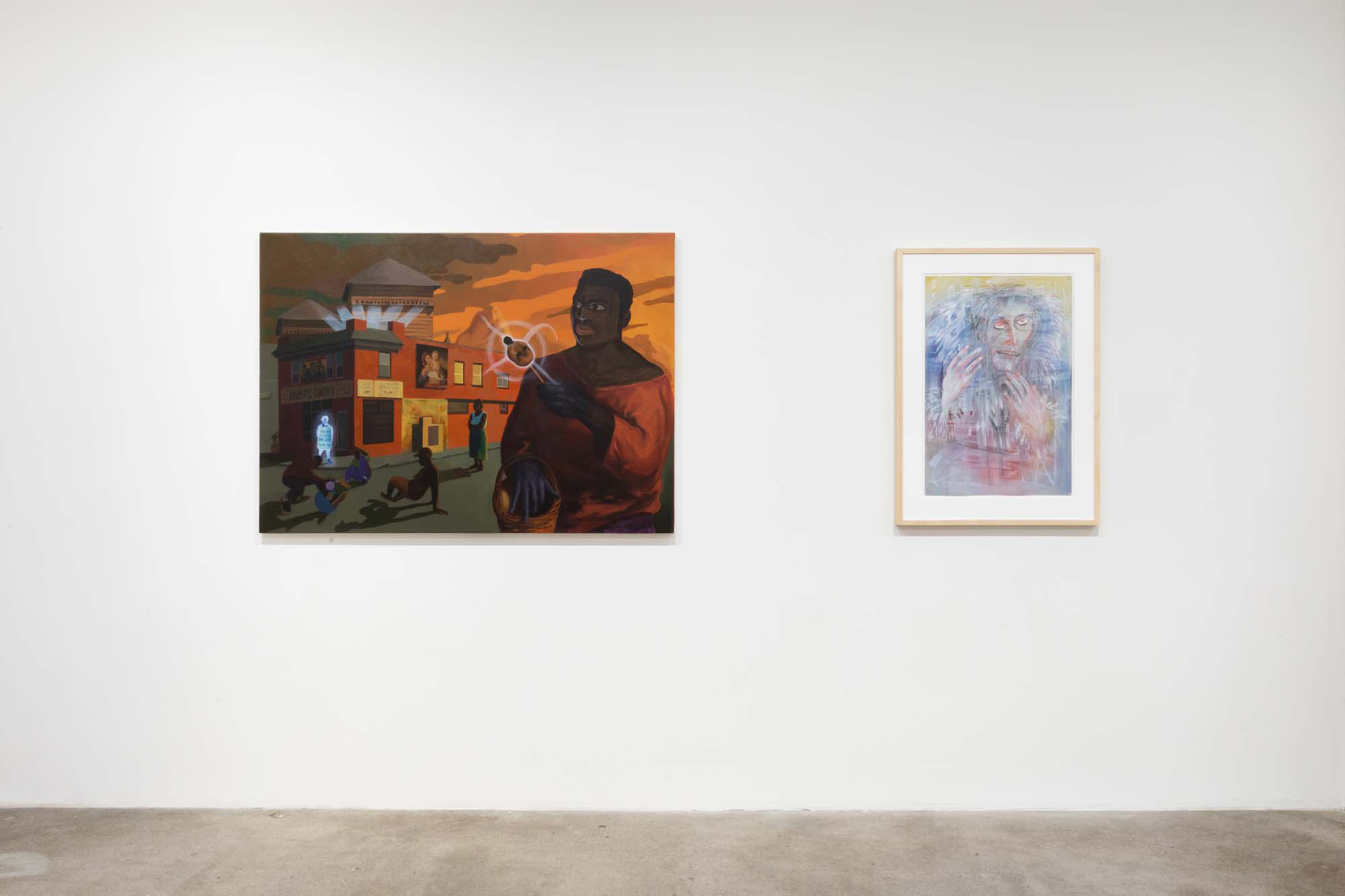
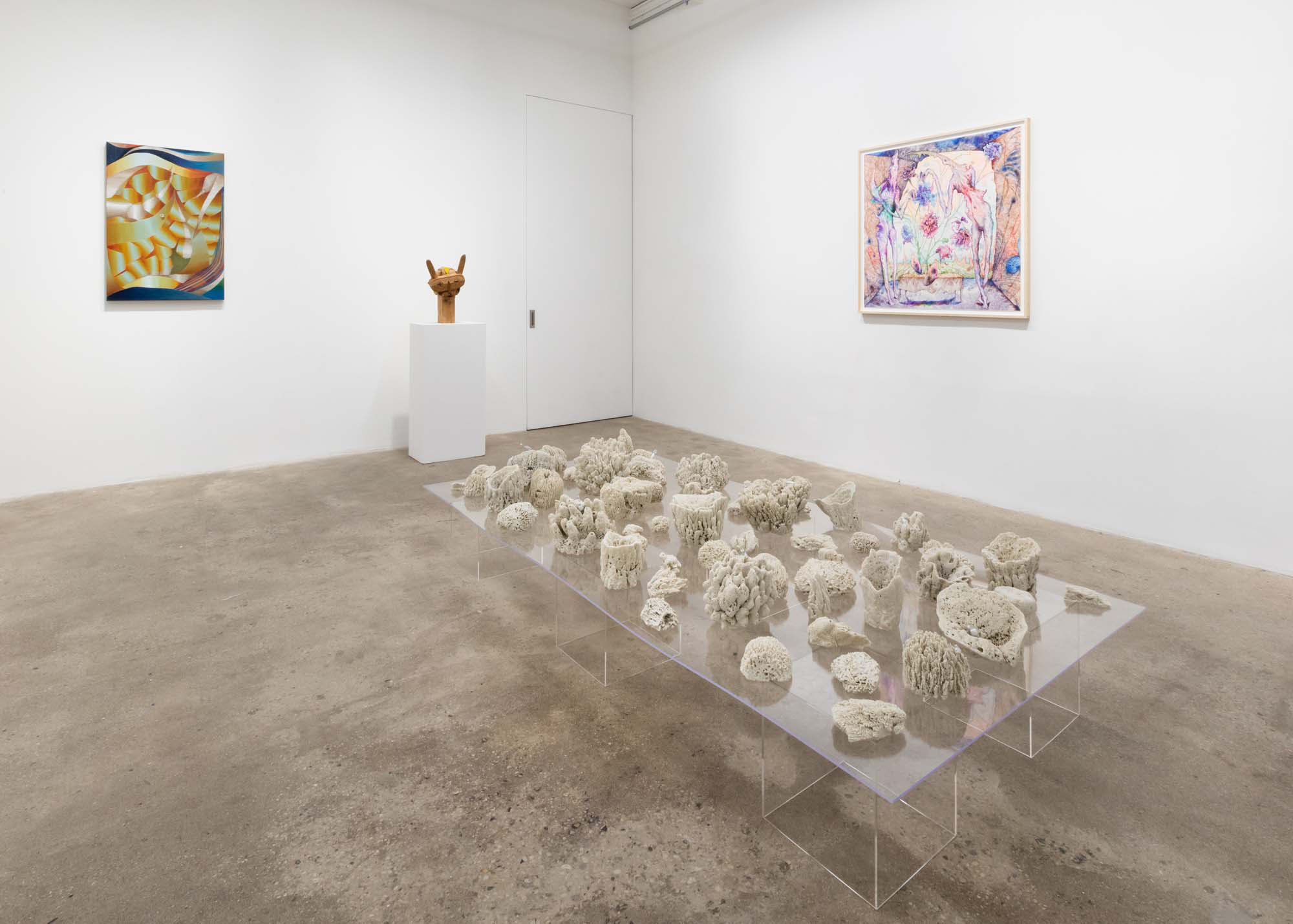
Previous Articles
OFLUXO is proudly powered by WordPress
